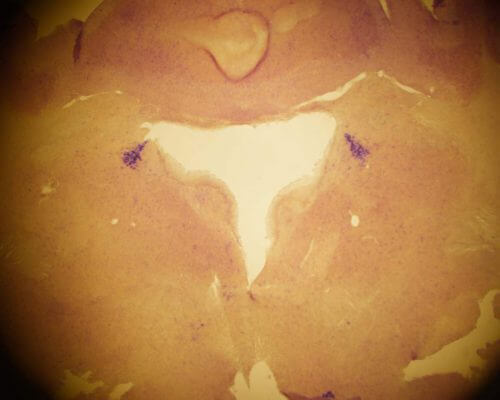In addition to its role in the liver, the ASL enzyme is involved in the brain's production of the neurotransmitter norepinephrine. A lack of this neurotransmitter may lead to various cognitive disorders, including attention deficit hyperactivity disorder

In her latest research, Dr. Ayelet Erez entered a new territory for her - the human brain. The journey there began following a surprising finding in patients with a rare genetic disease, characterized by a lack of the ASL enzyme that works in the liver to turn ammonia into urine - a substance that is excreted from the body in the urine. Dr. Erez and other doctors came to know that the patients with this disease have unexplained cognitive disorders. Even when the disease is diagnosed and treated at a young age - sometimes through a liver transplant - and the ammonia levels in the body return to normal, the patients tend to suffer from convulsions and a delay in their cognitive development.
These findings led Dr. Erez to hypothesize that in addition to its role in the liver, the ASL enzyme also plays a role in the brain. In previous studies, Dr. Erez discovered that ASL is essential for the production of nitric oxide (NO) - a signaling molecule that dilates blood vessels and is involved in many other biological processes in the body and brain. In their current study, recently published in the scientific journal Cell Reports, members of her group in the Department of Biological Control at the Weizmann Institute of Science, led by research student Shaul Lerner, tested whether ASL participates in the control of brain functions by means of nitrous oxide.
First, the scientists mapped ASL expression in the brain and found that the enzyme is mainly expressed in the brainstem region called the locus coeruleus ("blue spot" in Latin). This brain area is involved in controlling functions that require attention, such as learning and memory, as well as the response to stress and various other physiological processes. This area is the main production site of the neurotransmitter norepinephrine, also known as norepinephrine.
After that, the scientists created mice in which the ASL enzyme is not expressed in this area of the brain, and compared gene expression and different protein levels in these mice and normal mice. The comparisons showed that the lack of ASL led to a decrease in nitric oxide levels, which in turn led to a decrease in the levels and activity of the TH enzyme, which is necessary for the production of norepinephrine. Norepinephrine deficiency may lead to cognitive, physiological and behavioral problems, including hyperactivity and attention deficit hyperactivity disorder.
To verify that this is indeed the chain of biochemical events that connects ASL deficiency and brain dysfunction, Dr. Erez's group conducted a series of experiments in collaboration with the research groups of Prof. Menachem Segal and Prof. Alon Chen from the Institute's Department of Neurobiology. The experiments showed that the transgenic mice reacted to the stress in an abnormal way both at the physiological and behavioral levels. Additionally, these mice had a tendency to convulse. The symptoms in the mice were similar to those characteristic of patients with ASL deficiency or locus coeruleus dysfunction. These symptoms were markedly alleviated or disappeared when the mice received nitrous oxide supplements.
In fact, a previous study by Dr. Erez already hinted that the ASL enzyme affects the brain through nitric oxide. During her postdoctoral research, Dr. Erez gave a supplement of nitrous oxide to a child with ASL deficiency to treat his high blood pressure. The blood pressure did decrease, but surprisingly, the treatment also improved his cognitive abilities - his attention span, his verbal memory and even his chess skill. "Clinical trials will be required to determine if nitrous oxide supplements can solve problems of hyperactivity or attention and concentration in the general population, and in particular in the population with ASL deficiency," explains Dr. Erez, who, in addition to her hat as a researcher, also serves as a doctor specializing in children's genetic diseases. "But it probably won't hurt if parents of children with this type of disorder add foods rich in nitrogen oxide, such as spinach, to their children's menu."
"Brain functions may be damaged as a result of many genetic changes", she adds. "Rare genetic syndromes, such as ASL deficiency, allow us to discern how a specific genetic disruption affects complex conditions characterized by many changes, such as ADHD." Adds Lerner: "A deeper understanding of ASL activity in the brain may shed light on various brain functions and even give us new tools for metabolic control of the production of norepinephrine."
Also participating in the study were Dr. Almira Andrezhnova from the University Hospital of Bonn; Dr. Sima Verbitsky from the Department of Neurobiology of the Weizmann Institute of Science; Dr. Raya Eilam, Dr. Yael Kuperman, Dr. Michael Tzuri and Dr. Yuri Kuznitsov from the veterinary resources department of the institute; Dr. Alexander Brandis and Tabi Melman from the Department of Life Sciences Research Infrastructures; Dr. Ram Mazkeret from Tel Aviv University; Dr. Robert McCarter of George Washington University; and Prof. Sandesh Nagamani of Baylor College of Medicine.
The incidence of the rare genetic disease characterized by ASL enzyme deficiency is estimated at approximately 1 in 70,000 births.
